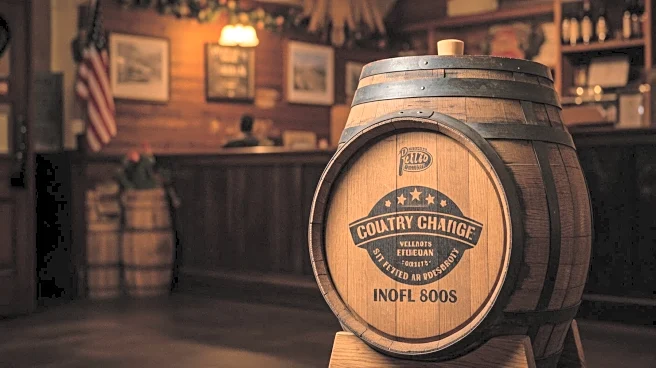What's Happening?
Cracker Barrel has faced significant backlash following the removal of 'Uncle Herschel' from its logo, opting for a text-only design. This change has led to a notable drop in the company's stock price. The original logo, introduced in 1969, was text-only, but the addition of the iconic imagery in 1977 became a staple of the brand. Former employee Erik Russell, now a brand designer, criticized the change, describing it as 'brand suicide.' Despite the backlash, Cracker Barrel CEO Julie Felss Masino stated that feedback has been 'overwhelmingly positive,' with requests for remodels coming from various locations.
Why It's Important?
The rebranding of Cracker Barrel highlights the challenges legacy brands face when updating their image. The backlash underscores the emotional attachment customers have to traditional branding, which can impact a company's market value. The stock price drop reflects investor concerns about the potential alienation of Cracker Barrel's core customer base, which values the brand's nostalgic appeal. This situation mirrors other branding controversies, such as those faced by Bud Light and Target, indicating a broader trend of consumer resistance to changes perceived as eroding traditional values.
What's Next?
Cracker Barrel may need to address the concerns of its loyal customer base to stabilize its market position. The company could consider engaging with customers to better understand their preferences and potentially adjust its branding strategy. Additionally, monitoring the stock market's response and investor sentiment will be crucial in the coming weeks. The company might also explore ways to reinforce its traditional values while modernizing its brand to appeal to a broader audience.
Beyond the Headlines
The controversy surrounding Cracker Barrel's logo change reflects broader cultural tensions in the U.S. regarding the preservation of traditional values versus modernization. This incident highlights the delicate balance companies must maintain between evolving with the times and retaining their historical identity. The reaction to the rebranding also illustrates the power of social media in amplifying consumer voices and influencing corporate decisions.












